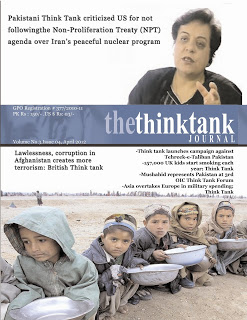The Capital Development Authority (CDA), in partnership with UN-Habitat and Shehersaaz Pakistan, marked World Cities Day 2025 and the 65th Anniversary of the Islamabad Master Plan with a powerful call: build smart cities that put people first.
Under the global theme “People-Centered Smart Cities”, the landmark event at the Pak-China Friendship Centre showcased Pakistan’s urban future – blending AI-driven governance, climate resilience, green mobility, and citizen-led innovation to transform cities like Islamabad into global models of sustainability.
Islamabad’s 65-Year Journey
Launched in 1960 by Greek visionary Doxiadis, Islamabad was designed as a garden city of harmony – wide boulevards, green belts, and sector-based planning. Today, 65 years later, it stands as Pakistan’s greenest, safest, and most organized capital.
But challenges loom:
- Population surge: From 100,000 (1960) to 2.2M+ (2025).
- Climate threats: 2022 floods, heatwaves, water scarcity.
- Urban sprawl: Unplanned growth in peri-urban zones.
M. Ali Randhawa, Chairman CDA: “Islamabad’s legacy is not just beauty — it’s balance. Today, we honor the past by building a smarter, greener, greener future.”
Smart City Islamabad 2030: 7 Game-Changing Initiatives
CDA unveiled a 10-year roadmap to make Islamabad a global benchmark for people-centered urbanism:
| Initiative | Impact |
|---|---|
| Electric Bus Fleet | 100 e-buses by 2026 → 70% cleaner air, 50% cheaper fares |
| Citywide Bicycle Network | 300km of safe lanes → 1M+ daily cyclists by 2030 |
| New Green Sectors | C-14 to F-13, Margalla Enclave → 500,000 new climate-resilient homes |
| Safe City AI Surveillance | 10,000+ smart cameras → 40% drop in crime (ICT Police data) |
| Rainwater Harvesting Mandate | Every new building → 30% reduction in water demand |
| Digital Citizen Portal | One-app governance → 90% services online by 2027 |
| Zero-Waste Islamabad | AI sorting + composting → 80% waste recycled by 2030 |
UN-Habitat’s Resilience Blueprint for Pakistan’s Cities
Jawed Ali Khan, UN-Habitat Pakistan, warned:
“Floods, heat, and water crises expose urban fragility. Smart must mean resilient.”
UN-Habitat’s Pakistan Urban Resilience Program (2025–2030) includes:
- Green Building Codes adopted in 5 cities.
- Climate-adaptive zoning in Lahore, Karachi, Peshawar.
- People’s Framework for Sustainable Cities – co-created with 10,000+ citizens.
Safe & Smart: ICT Police Leads with AI
IGP Syed Ali Nasir Rizvi revealed:
- Safe City Project Phase II now covers 100% of Islamabad.
- AI-powered emergency response: 2-minute average arrival.
- Air quality + traffic AI dashboards live on Islamabad App.
“Safety is the foundation of a smart city. We’re building trust through technology.”
Shehersaaz: Citizens as Co-Creators
Almas Shakoor, Executive Director, stressed:
“Tech without behavior change is useless. Civic pride = sustainable cities.”
Shehersaaz launched:
- “My Islamabad, My Plan” – 50,000+ citizen inputs via app.
- Youth Urban Labs in 20 colleges training smart city leaders.
Islamabad Sheher Mela:
The day ended with “Islamabad Sheher Mela” – a vibrant urban carnival:
- Smart city demo zones: e-buses, solar bikes, AI waste bots.
- Cultural stage: Sufi music, folk dances, K-Pop flash mob.
- Local food street: 50+ stalls from Margalla to Murree.
- Kids’ eco-workshops: Build-your-own mini green city.
Attendance: 25,000+ families – largest public urban event in Pakistan’s history.
Islamabad isn’t just Pakistan’s capital — it’s a global case study:
- From master plan to smart plan in one generation.
- Public-private-civic synergy at scale.
- Climate resilience + inclusivity = livability.
UN-Habitat Vision: “Every city — from village to metropolis — must be sustainable, safe, and soulful.”
What’s Next? Pakistan’s Urban Decade (2025–2035)
| Goal | Target |
|---|---|
| 100 Smart Neighborhoods | Across 10 cities |
| 50% Green Transport | By 2030 |
| Zero Informal Settlements | In planned cities |
| 1M Urban Trees Planted | Islamabad Green Belt 2.0 |



